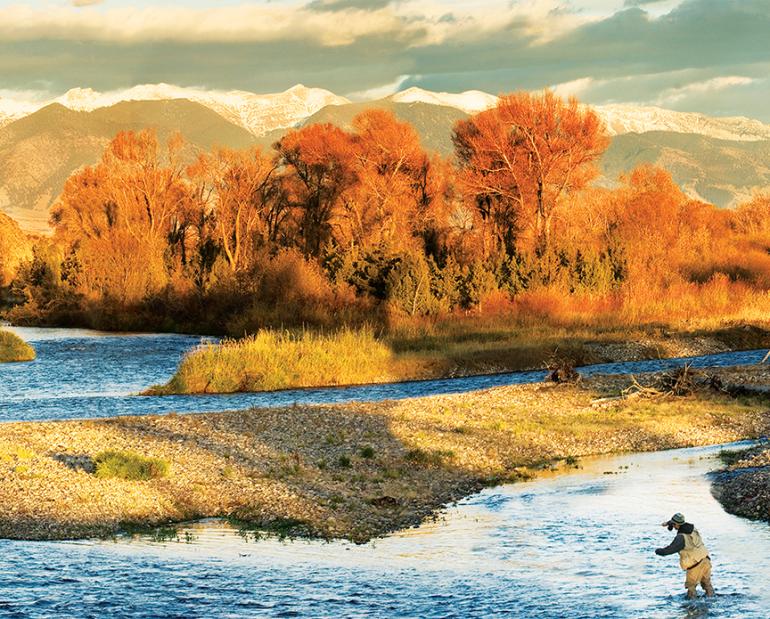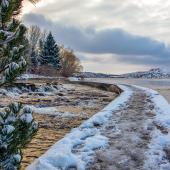Hoppers & Hooters
Fly fishing and roaming around good country is what autumn was designed for, with the array of color in leaves and grasses, cool blue skies, pure waters, and trout feeding with a fervidness driven by approaching winter. I share this madness—perhaps even a form of dread of cold, snow-covered days where the sun appears to rise and set within a few hours of itself far to the south below the Absarokas. These emotions push me to spend as much time out casting and camping under star-packed skies as I can. September and October are months to transition into the chill darkness: to build a fragile base for sanity and survive until spring.
Within 150 miles of home in Livingston, there are enough rivers, streams, and lakes to fish a different spot every day for months. Where to strike off is complicated only by the abundance of choice—a wonderful dilemma.
One afternoon in late September with the undergrowth blasting shades of red, rust, and copper, I worked upstream on a small river about 90 miles from town. I turned browns and cutthroat on every other cast: autumn fishing displaying its finest wares. I was casting 20 feet, using my largest Joe’s Hopper, a #6, but still smaller than the natural bugs splatting on the water and getting devoured. I’d never experienced grasshoppers of this size this late in the year. Fish of six inches grabbed my pattern and raced off. These small guys had trouble submerging for cover because of the buoyancy of the bug. Browns approaching 20 inches and cutthroat of 16 inches had no such problems, snapping the bug between toothy jaws and leaping across the surface several times each.
I’d been doing this for a couple of hours when I rounded a bend and saw the silver-grey gnarled trunk of a long-dead tree clinging to a crumbling limestone cliff. I was about to make a cast to a large brown gorging on the hoppers when I noticed what looked like two buff-colored scratching posts jutting up from the dead tree. I assumed these were just rock erosions when a larger grey shape flapped from the bankside brush and landed just below them, shattering the illusion: a great horned owl and her offspring. The tops of the twin scratching posts rotated to match my progression upriver as did the mother’s large head and pointed ear tufts. Each cast, each played and released fish, and each sliding footstep was tracked silently as I moved even with and then past the three owls. They evidenced no interest in me nor appeared to consider me a threat—laughable, but not any sort of danger. I looked at them and they stared back, never blinking. I looked back after rounding a bend, and the three heads had rotated to cover my progression. When I returned to the spot a few hours later they were gone.
I’ve had sandhill cranes—big ones over five feet tall—cross a stream within a rod’s length of me. My wife Ginny called wild turkeys into camp one year, and I’ve been dive-bombed by red-tailed hawks guarding their young. Nothing has been quite so reassuringly odd as those owls. Their stares and silence were saying, “We know you’re a little bit out there, buddy—so are we. Have at it. We’re all loony friends here.” The experience left me at peace with myself. Those owls were good people.











